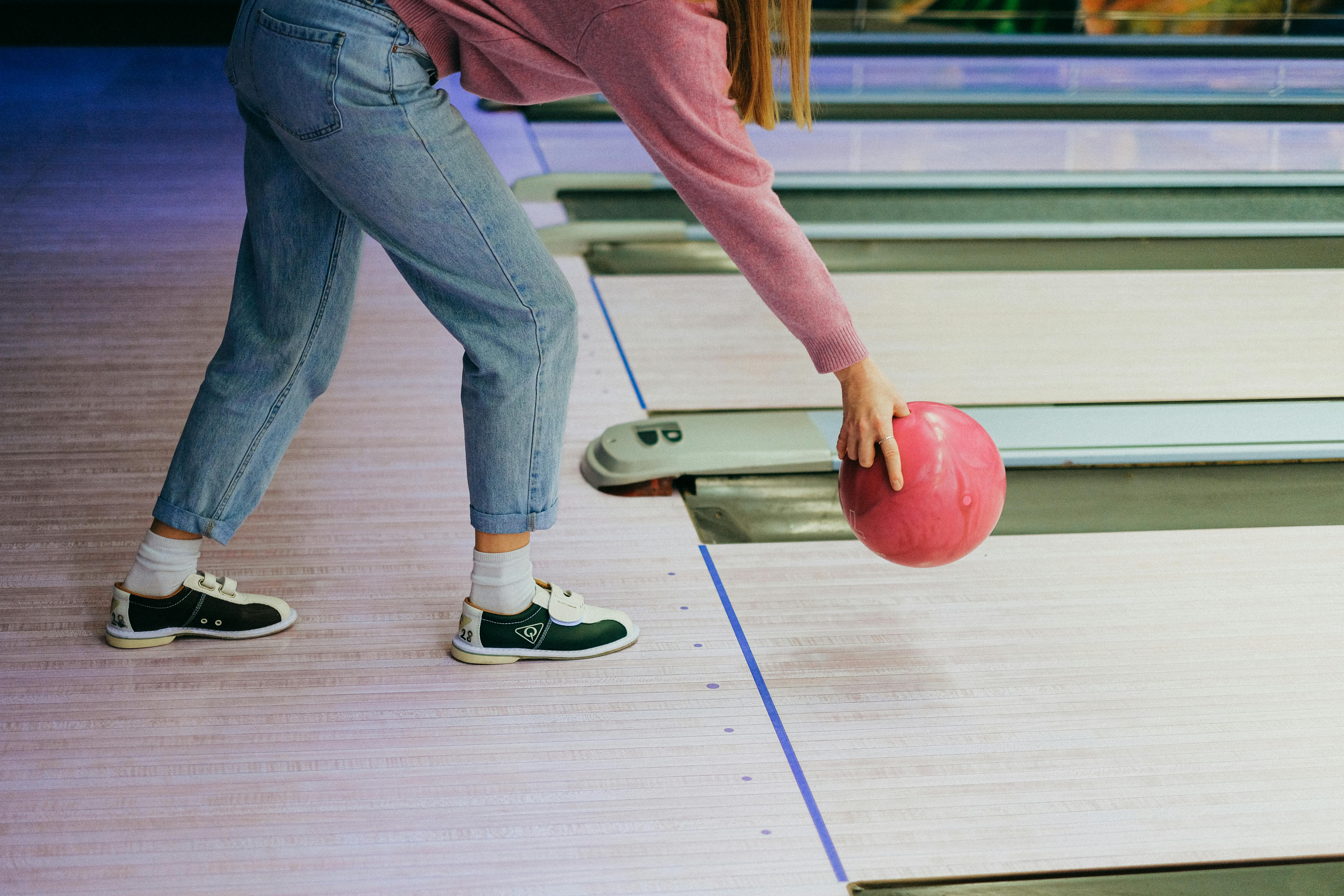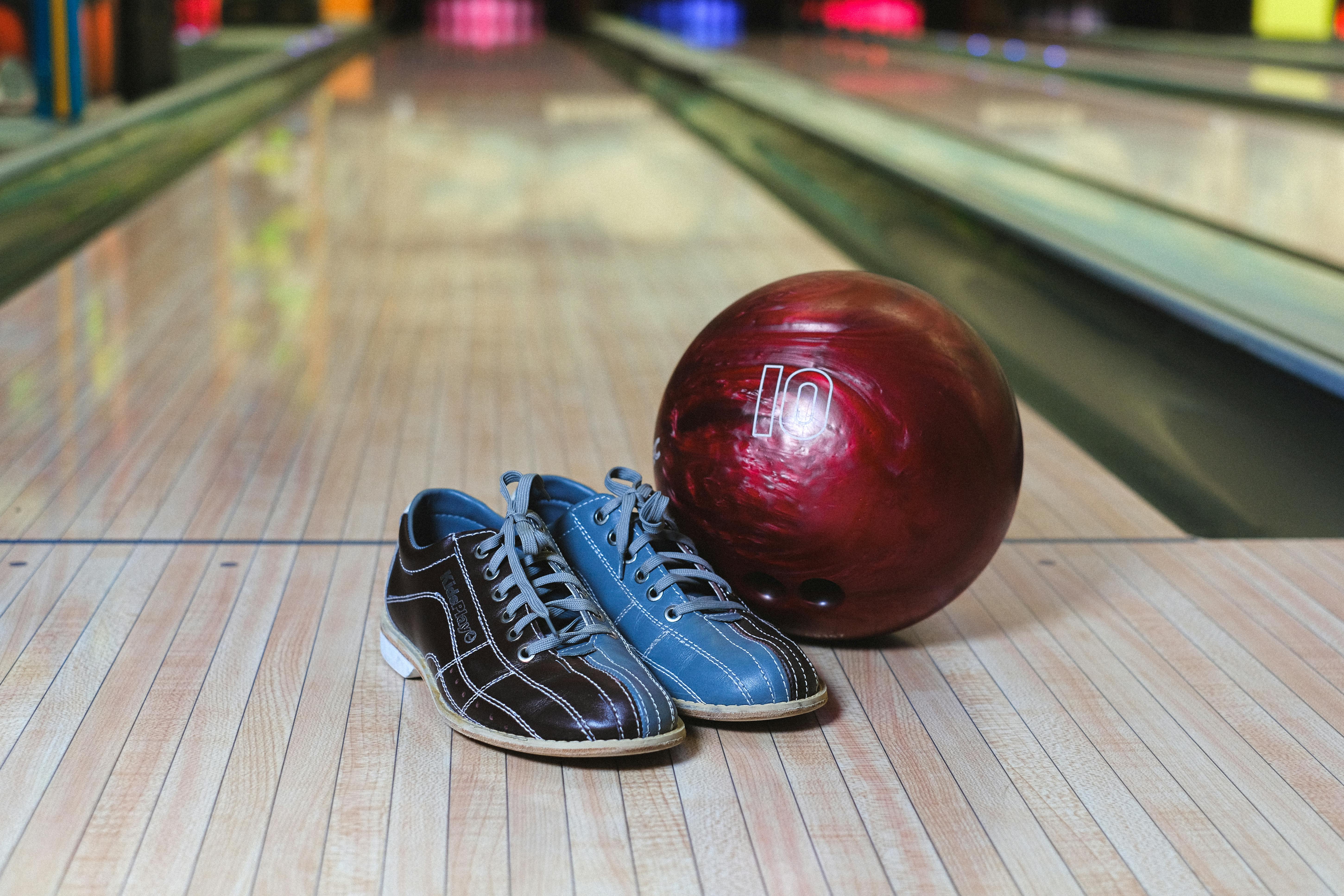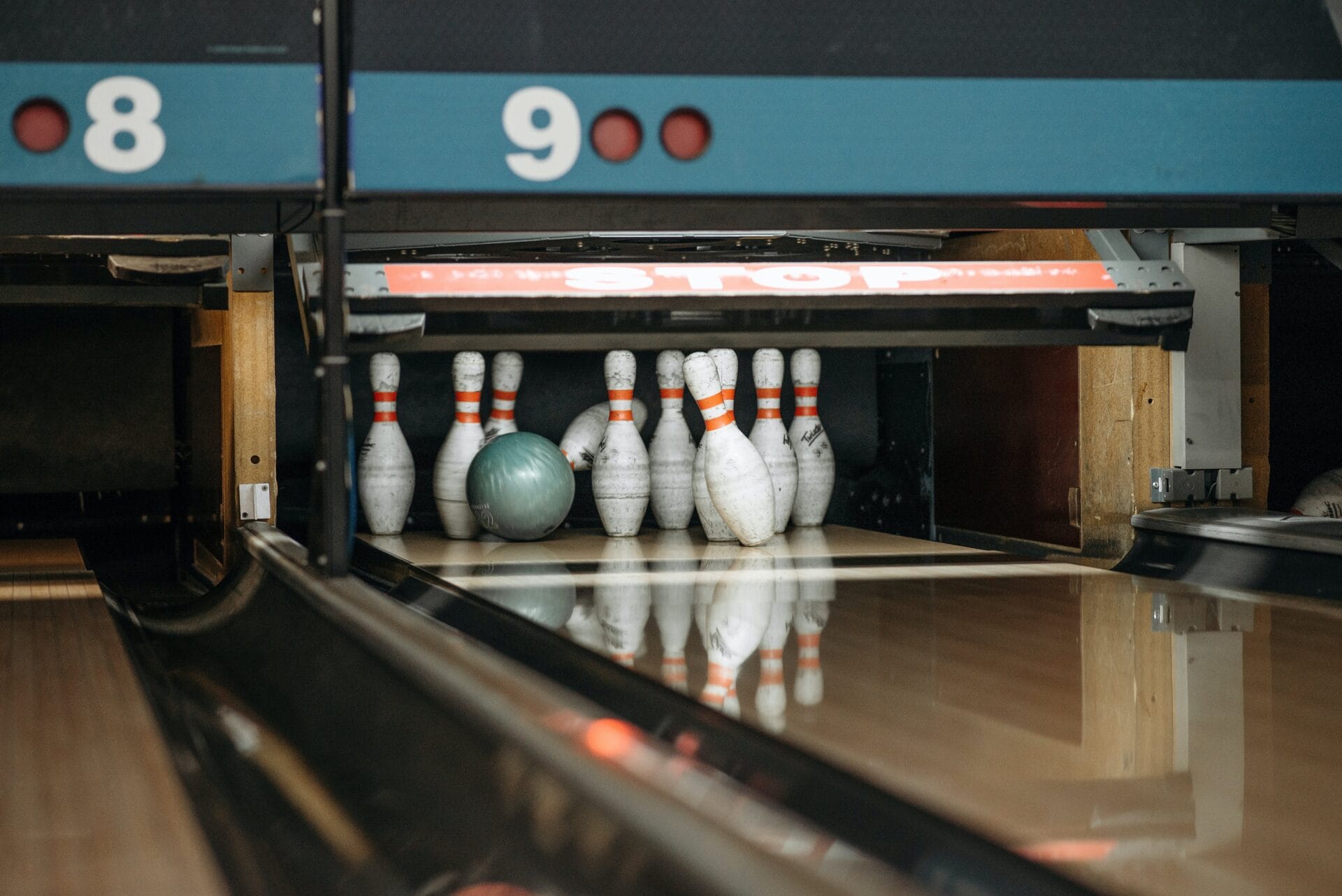When it comes to bowling, choosing the right bowling ball can be the difference between a strike and a gutter ball. Knowing how heavy of a bowling ball to use is an important part of improving your game. In this article, we will discuss the factors that go into choosing the correct weight for your bowling ball and provide some helpful tips for selecting the best one for you.The weight of the bowling ball you should use depends on your height, strength, and bowling style. Generally, bowlers who are shorter than 5’3″ should use a ball that weighs between 10 and 14 pounds. Bowlers between 5’4″ and 5’7″ should use a ball that weighs between 12 and 16 pounds. Bowlers over 5’8″ should go with a ball that weighs 14 to 16 pounds. If you are an advanced bowler, you can go up to 18 pounds.
What Is the Ideal Weight for a Bowling Ball?
Finding the ideal weight of a bowling ball is important for bowlers of all levels. Having a ball that is too light or too heavy can affect your performance and throw off your game. Generally, most adults find that a bowling ball between 14-16 pounds is best suited to their needs. However, it’s important to consider your physical size and strength when choosing the right weight for you.
If you are smaller or have less upper body strength, it may be better to go with a 14-pound ball. This will help you control the ball better without straining yourself too much. On the other hand, if you are bigger and have more upper body strength, a 16-pound ball will give you more power and momentum when throwing it down the lane.
Another factor to consider when looking for an ideal weight of bowling ball is your style of play. If you prefer a fast hook shot, then going with something lighter will make it easier to control and spin the ball quickly. If you prefer a straight shot with minimal hooking power, going with something heavier can help increase accuracy and consistency in each throw.
The best way to find out what weight works best for you is to try out several different balls in practice sessions at your local bowling alley or pro shop. Different weights will feel very different in your hands, so it’s important to experiment until you find what works best for your game.
How to Choose a Bowling Ball by Weight
Choosing the right bowling ball weight is an important part of bowling. It is important to find a ball that fits your needs and is comfortable to use. Here are some tips to help you choose the right bowling ball weight for you:
First, consider how much strength you have in your arm and wrist when choosing a weight. If you are a beginner, it is best to start with a lighter ball. This will allow you to get used to the game and build up your arm strength. On the other hand, if you are an experienced bowler, a heavier ball may be better since it will provide more power and control.
Second, consider how often you plan on using the ball. If you plan on bowling frequently it may be best to go with a heavier ball as this will help reduce wear and tear on your arms and wrists. On the other hand, if you don’t plan on using the ball very often, a lighter one should be sufficient.
Third, think about what type of lane conditions you will be bowling on most often. If you bowl mostly on dry lanes (lanes with little oil), then a heavier ball may work well for you as it will give more control and power when hitting the pins. On the other hand, if you bowl mostly on oily lanes then it might be better for you to go with a lighter ball so that it can travel further down the lane before hooking back into the pocket.
Finally, take your time when trying out different weights of balls at your local pro shop or bowling alley. You want to make sure that whichever weight of ball that you choose feels comfortable in your hands and is able to provide good control when throwing strikes or spares.
By following these tips, choosing the right bowling ball weight should become much easier!
Factors That Determine the Right Weight of Bowling Ball
The weight of a bowling ball is one of the most important factors that affect a bowler’s performance. Finding the right weight for a bowling ball is essential to help ensure that you have the best possible chance at success on the lanes. It is important to note that there are several factors that go into determining which weight is right for you.
The first factor to consider when selecting a bowling ball weight is your strength and size. If you are a larger person, you may need to use a heavier ball in order to get enough power behind your shot. On the other hand, if you are smaller or weaker, then you might want to opt for a lighter ball so as not to strain yourself too much.
Your style of bowling is also an important factor in selecting the right weight for your bowling ball. If you are an aggressive bowler who likes to power through shots with lots of spin and speed, then it might be wise to opt for a heavier ball. However, if you prefer more finesse and control over your shots, then it might be better for you to use a lighter ball.
Finally, another important factor in determining which weight is best suited for your needs is your skill level. If you are just starting out in bowling and still learning the basics, then it may be wise to use a lighter ball so as not to overwhelm yourself with too much power too soon. On the other hand, if you are an experienced bowler who has mastered their technique, then it might be wise to opt for a heavier ball in order to maximize your power and spin potential on each shot.
No matter what kind of bowler you are or what level of skill or strength you possess, finding the right weight for your bowling ball can make all the difference when it comes time to step up and face off against opponents on the lanes. By taking into account all these factors when choosing which weight is best suited for your needs, you can ensure that every shot has its maximum potential for success!
Standard Weights of Bowling Balls
Bowling balls come in different weights and sizes depending on the player’s preference and skill level. The standard weights for bowling balls are 6, 8, 10, 12, 14, and 16 pounds. The weight of a bowling ball is important because it affects the speed of the ball when it is rolling down the lane. A heavier ball will create more force and move faster than a lighter one. For instance, a 12-pound ball will roll faster than an 8-pound ball. Generally speaking, beginners should use lighter balls while experienced players can opt for heavier ones.
When shopping for a bowling ball, it is important to choose one that fits your hand size and grip comfortably. If you are unsure about what weight to choose, you can ask a staff member at the bowling alley or pro shop to point you in the right direction. They will be able to help you determine what weight is best based on your size and skill level.
Additionally, there are special rules regarding the size and weight of a bowling ball that must be followed in professional tournaments or leagues. In some cases, there may be limits on how heavy or light the ball can be used by players in certain divisions or categories. Be sure to check with your local tournament or league organizers before playing to make sure you are following all rules and regulations for bowling ball weights and sizes.

Bowlers Arm Strength and Ball Weight
When selecting a ball weight for bowling, it is important to consider the strength of the bowler’s arm. The weight of the ball should be determined by the strength of the bowler’s arm and not by how far they want to throw it. A heavier ball will require more effort to throw and can cause injury if thrown with too much force. On the other hand, a lighter ball may not travel as far but will be easier to control.
The power of a bowler’s arm is determined by their physical condition and technique. An experienced bowler will have better technique and more muscle strength than a novice bowler. Experienced bowlers should use heavier balls that require more force to throw, while novice bowlers should use lighter balls that are easier to control.
It is also important to consider the size of the lane when choosing a bowling ball weight. A narrow lane will require less force to move a heavy ball than a wide lane, so bowlers should choose heavier balls when playing on narrow lanes and lighter balls for wider lanes.
The type of oil on the lane can also affect how heavy or light a bowling ball needs to be. If there is more oil on the lane, then bowlers may need to use lighter balls in order to prevent them from slipping too much when they roll down the lane. Likewise, if there is less oil on the lane, then bowlers can use heavier balls in order to get more power behind their throws.
In summary, it is important for bowlers to consider their own physical condition and technique as well as the width of the lane and amount of oil when choosing a bowling ball weight. By taking these factors into account, bowlers can ensure that they are using an appropriate ball weight that will provide them with maximum control over their throws without risking injury or over-throwing their shot.
Lightweight Bowling Balls
Lightweight bowling balls are typically around 8 to 12 pounds. They are easier to throw than heavier bowling balls, so they can be a great choice for beginners or children. The lighter weight also makes them easier to control, meaning you can adjust the ball’s speed and direction with greater precision. Additionally, they require less strength and energy to throw, so you can bowl longer without feeling fatigued.
Heavyweight Bowling Balls
Heavyweight bowling balls are typically over 12 pounds. They offer more momentum and power than lightweight bowling balls, which means they have greater potential for knocking down pins. As such, heavyweight bowling balls may be a better option for experienced bowlers looking to improve their game performance. However, they require more strength and energy to throw accurately, so beginners may find them difficult to use effectively.
Pros and Cons of Lightweight Bowling Balls
The primary advantages of lightweight bowling balls are that they are easier to throw and control compared to heavier models. This makes them a great choice for novice bowlers or children looking to get started in the sport. Additionally, they require less energy and strength to use accurately, which means you don’t have to worry about getting tired during a game.
The main disadvantage of lightweight bowling balls is that they don’t offer as much momentum as heavier models. This means that experienced bowlers may not be able to achieve the same performance they would with heavyweight bowling balls.
Pros and Cons of Heavyweight Bowling Balls
The main advantage of heavyweight bowling balls is that they offer more power and momentum than lightweight models. This makes them ideal for experienced bowlers who want to get the most out of their game performance. However, it should be noted that these models require more strength and energy to accurately throw than lighter versions.
The primary disadvantage of heavyweight bowling balls is that they can be difficult for novice bowlers or children to use effectively due to their increased weight. Additionally, it requires more strength and energy than lighter versions, which can make long-term play tiring if you’re not used to it.
Adjustable Weight Bowling Balls – Benefits and Disadvantages
Adjustable weight bowling balls are becoming increasingly popular among bowlers of all skill levels. These balls offer the convenience of being able to quickly and easily switch between lighter and heavier weights, allowing bowlers to fine-tune their performance for different conditions. Adjustable weight bowling balls have a number of advantages, including improved accuracy, greater control over the ball’s path, and more versatility in terms of lane conditions. However, they also come with some potential drawbacks that must be considered before making a purchase.
One of the primary benefits of adjustable weight bowling balls is improved accuracy. By changing the ball’s weight, bowlers can adjust their swing speed or release angle to better suit their individual style and match up with various lane conditions. This makes it easier for them to hit their target more consistently and with greater precision. In addition, having an adjustable weight ball allows a bowler to make quick adjustments on the fly if they feel like they’re not getting enough hook or spin on their shots.
Another benefit of adjustable weight bowling balls is greater control over the ball’s path down the lane. By adjusting the weight, bowlers can customize the amount of hook or spin that they want from each shot, allowing them to be more precise in terms of setting up shots or targeting certain areas on the lane. This can be especially helpful for bowlers who frequently compete in tournaments or leagues where subtle differences in ball motion can make all the difference between winning and losing.
Finally, adjustable weight bowling balls offer increased versatility when it comes to lane conditions. Depending on how much oil is down on a particular lane (or how dry it is), bowlers may need to adjust their equipment in order to get maximum performance out of their shots. With an adjustable weight ball, this can be done quickly and easily without having to switch out equipment every time there is a change in oil patterns or lane conditions.
Of course, there are also some potential drawbacks associated with adjustable weight bowling balls that should be taken into consideration before making a purchase. The most notable issue is cost – these balls tend to be more expensive than traditional non-adjustable models due to their added features and construction materials. Additionally, because they require additional parts like weights (which need replacing from time-to-time) as well as specialized tools for adjusting them, they may require more maintenance than non-adjustable models do over time.

Conclusion
Selecting a bowling ball weight that is right for you is important for maximizing your performance and enjoyment. It should be comfortable to hold and light enough to allow you to control the ball throughout the swing and release. If the ball weight is too heavy, it can cause strain on your wrists, arms, and shoulders. Ultimately, the best way to determine what weight of bowling ball is best for you is to experiment and try out different weights.
Remember that your local pro shop can help in finding the right ball for you. They will be able to help you select a ball that fits your size, ability level, and style of play. With a few adjustments and practice, you’ll be able to find a bowling ball that suits your needs perfectly!




